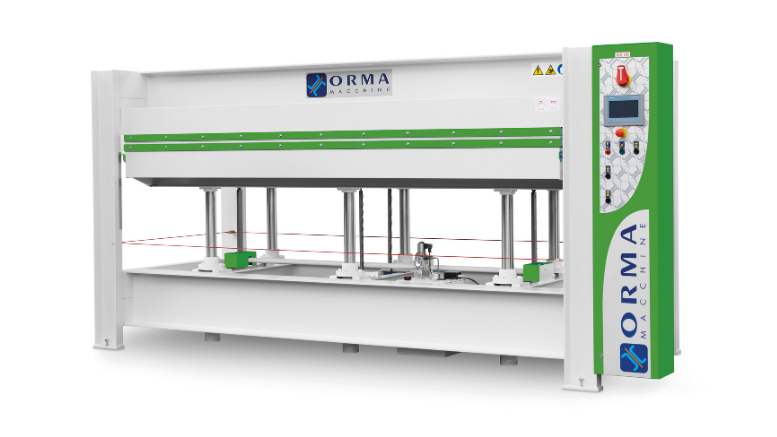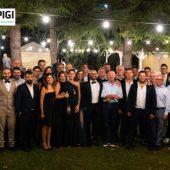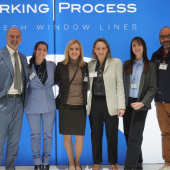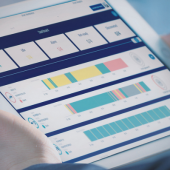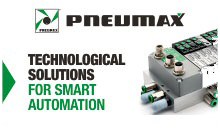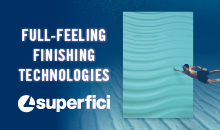We have been writing about it for years: “sustainability” will be one of the most important and popular keywords in the near future, and adapting any product or service to this concept will be one of the strongest innovation drivers. That’s exactly what happened at Ormamacchine in Torre Boldone (Bergamo).
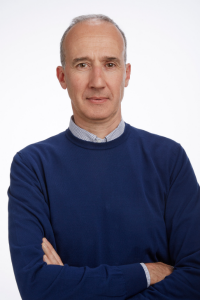
“More than ever, today we need to innovate paying utmost attention to values that are increasingly having a positive impact on all human activities. We did so and we do it everyday also at Ormamacchine, and this approach is the origin of our new “Esg-Energy Saving Green” platens. That’s the start of our conversation with Fabrizio Azzimonti, whom we met in the offices of the family-owned company, known all over the world for their presses, designed and built not only for wood, but also for composites and any application where you need surfaces to press a material in order to join it or change its shape or structure…
“Our business may seem a low-tech industry, but that’s not true, there is a continuous search for new methods and solutions to develop more and more effective equipment. We had an idea to create new “green” platens for our presses, which help reduce energy consumption while offering better performance in certain areas.”
“You see – Azzimonti continued – until now, there have been two methods to heat the press platens: either you use circuits where a pump “pushes” hot oil from an electric boiler, or you install aluminum plates with embedded copper resistors that are heated electrically. The latter are much more energy-demanding and they are popular in Northern Europe and all the countries with cheaper electricity bills. These machines are often found in small and medium workshops, which would be very happy to see other figures in theirenergy bills, we believe. We pondered long about this topic, until we came across a company that suggested different materials from copper to heat the platens of our presses, using less energy and achieving improved heat distribution across the entire surface. We used a popular material, carbon, to make new resistors and start a number of tests, proving that our experience in the processing of composite materials could also be leveraged for a more conventional business like woodworking. We can say we have hit the target, and now our new platens are protected by a patent and their performance are certified by Det Norske Veritas, an institute that needs no introduction, whom we asked to measure the performance of our Esg platens.
For a few months now, we have been offering this technology upgrade to industry companies, replacing legacy systems with a solutions that not only saves 30 to 40 percent but also eliminates oil, boiler, piping, risks of leaks and costly maintenance… Talking about oil-based systems, we also have to consider that oil comes from crude oil, that it generates unhealthy fumes when heated, and that you have to dispose of exhausted fluids, so our “green” proposal has a much wider scope than just energy-saving, drawing attention also from countries with cheaper energy bills, as it supports profitability.”
How has the market reacted?
“Better that we could expect. We have been working at these new platens for three years and we have tens of installations around the world: ever since early “test machines” we had very positive feedback, and today we are getting requests from many European countries, where people are more sensitive about certain topics, and process quality must be at the top. Don’t forget we are talking about lamination, i.e. the application of veneer or laminates, so the visual qualities of a product, with fully adjustable temperatures up to 120 degrees Centigrade. Not only: with our “Esg” platens, the user can handle different temperatures, an interesting option when you have to laminate a panel with two different materials and you need different temperature above and below, which you cannot have with oil presses… I can also tell you we are investigating the possibility to build our “Green” presses with platens having different dimensions from conventional machines, as we believe this can open up new application opportunities.”
Let’s talk about performance…
“If you are referring to consistent heat across the platen, I can tell you we have a 7-degree gap between the hottest and the coldest spot, so much narrower than you normally have with other heating systems. We are seeing that such consistency allows small and medium workshops to test different applications. The temperature gap is really suitable even when you measure the number of pressing cycles. Let me explain better: we checked the temperature levels of our platens during a standard cycle of twenty press operations, i.e. opening and closing the press several times and simulating standard daily operation. We saw that temperature is very stable: when you load, press and unload panels, there is no temperature loss, so you don’t need more power to restore the correct operating temperature. Accurate temperature control, as mentioned before, also makes our “Esg” platens ideal for continuous cycle presses.”
Was it hard to achieve this result?
“After the design phase and early tests, we had to face the Coronavirus challenge: starting over was not easy, as we are located in one of the regions where the pandemics has caused a huge number of casualties…If we look at the systems, I can tell you that this is definitely a much simpler solution than oil. The most difficult part was the correct configuration and dimensioning of these “carpets” of carbon resistors, balancing the different dispersion between the central portion and the outer sections of the platens: the outer section, closer to the atmosphere, diffuses more heat with a consequent reduction of temperature, with we compensate with a different logic in resistance distribution.Defining a close partnership with our resistor suppliers, and most of all having an engineering department that can tackle such issues was essential and helps us grow in a market that must be constantly “stimulated”, a market where you have to respond with expertise, professionalism and rigor.
Over the past 18 months, it was very useful for us to get feedback from the customers who have adopted this technology, remarks, ideas and suggestions which – as I mentioned – have enabled us to optimize a few details, and most of all to think about different interesting developments. During this process we have been supported by a research laboratory and by the Department of Sciences and Technological Innovation of Università del Piemonte Orientale, a collaboration that is continuing for a research project, also involving our supplier, to study the electrical properties of these carbon resistors. Actually, such resistors have a different Ohmic behavior from copper resistors, where resistance increases together with temperature; instead, carbon resistors release more power as heat increases, as we measured during our tests. As I said, innovation stems from continuous focus on research, from the development of new ideas, and I believe that this challenging season for Ormamacchine will bring new directions and tangible ideas for the future. For instance, I can anticipate that, working on the section of the carbon filaments used to manufacture our resistors, we have seen that we can further optimize the result, creating different resistors for bigger machines, a possibility we did not have before, and we have also offered our “Esg” platens in the most popular dimensions in Anglo-Saxon countries…”.
…which segments do you expect the greatest satisfaction from?
“Stronger demand keeps coming from small and medium businesses, also because in recent years there is an increasing awareness that, to face deep market transformation, you have to invest: we are currently building 300 to 350 presses every year for that market segment, a significant portion of our production. Let me tell you that I really believe in the value of this proposal by Ormamacchine: for fifty years, the only development in pressing has been the replacement of water-based heating plants using waste wood with electric boilers or resistor platens. I think we have taken a big step forward, also because our platens are made of different “carpets”, and in case of malfunctions, you just have to open the platen, remove the “carpet” and replace it to restart production immediately. Really a huge benefit”.

